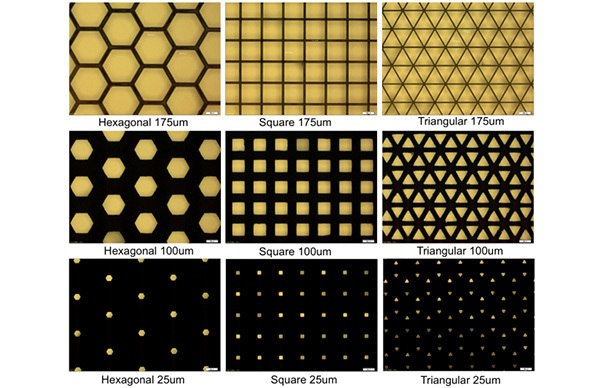High Contrast Gradient Lens Antennas
Tech ID: 18-087
Inventor: Dr. Johnathan Chisum
Date Added: August 22, 2019
Overview

A gradient index lens consisting of micro-etched stacked silicon wafers for improving 5G antennas.
Technology Summary
The lack of effectively-designed antennas has limited the adoption of 5G networks. Current 5G antennas (phased arrays and hybrid arrays) are extremely large and expensive and thus are not feasible for use in mobile phones or small cell base stations.
Dr. Chisum has developed a gradient index (GRIN) lens that uses stacked silicon wafers that have been micro-etched with continuous polygon unit cells. These GRIN lenses can be implemented in antenna to address the cost and size issues of current 5G antennas. These lenses are produced using a Bosch microetching process that creates thin, stackable, silicon wafers. These wafers are stacked to form a lens with a varying gradient of permittivity which enables more extreme designs, including flatter lenses. GRIN lenses exhibit 95% power savings over Phased and Hybrid arrays leading to cost reductions. Antennas made with GRIN lenses have the ability to scale to future networks (6G and beyond) much more easily than traditional phased arrays.
Market Advantages
- Cost and size reductions for 5G antenna
- 95% power savings over Phased and Hybrid arrays
- Easy transition to future networks (6G)
- Analog beam steering
Technology Readiness Status
TRL 4 - Lab Prototype
Intellectual Property
US Application 16/509,856 (High Contrast Gradient Index Lens Antennas)
Publication
Silicon Micromachined High-contrast Artificial Dielectrics for Millimeter-wave Transformation Optics Antennas - Arxiv ID: 1709.06943
Contact
Richard Cox
574.631.5158